A global traveler who maintains an unshakeable bond to the land on which she grew up. A yoga instructor who guides hunting expeditions. A former Miss Wyoming who, instead of visiting the gym, gets her exercise running a robust ranch that has been in the family for nearly 50 years. Jessie Allen does nothing if not defy stereotypes. A role model for women of all ages who seeks daily to understand and learn from the land and its countless inhabitants, Jessie Allen was a natural selection for this month’s edition of 18 Questions. Today’s article explores her relationship with Diamond 4 Ranch, how she especially seeks to empower youth and women in outdoor settings, and the components of mindfulness she brings into every activity of her busy life as ranch director. Saddle up because you’re in for a fun ride!
- How have you seen Diamond 4 Ranch evolve over the course of your life?
My great-grandfather started an outfitting operation in the Wind River Mountains in the 1920s, guiding people on horseback throughout the mountain range for a few decades. When my great-grandfather sold his business, the outfitting operation skipped my grandfather, but my dad and his brothers were eager to bring it back to life in the 70s. As energetic 20-something-year-old cowboys, my dad and his three brothers started the Allen Brothers outfitting operation in 1973. When they started the business, they obtained an outfitting permit on the Shoshone National Forest, with the ranch consisting of only one small cabin and small corrals. They started building cabins, one by one, using lodgepole pine trees from the dense surrounding forest. Now, there are about 16 total structures, including the lodge, guest cabins, bunkhouse, tack rooms, etc. – all built by my family and our crew throughout the years. By the early 80s, my dad’s brothers drifted off to other career pursuits, which is when my parents took over sole ownership and changed the name from the Allen Brothers to the Allens Diamond 4 Ranch. Our “Diamond 4” brand honors the four brothers who started the business. My parents assembled the herd of horses by training wild mustangs, buying a stud and some mares, and raising colts. By about 1990, the herd had grown to over 100 horses, which is where the number has remained throughout the years. I can tell you the details and backstory of all the horses throughout my lifetime – they have always been like family.
I was born in May 1990 and spent every summer on the mountain ranch. As a child, I had a list of chores that got more extensive as I got older, gaining more and more responsibility with the ranch throughout the years. Around the ages of 5 – 10, if I wasn’t “off on a mission” with my horse and my dogs, riding bareback to the creek to go swimming and trying to catch fish with my hands, building forts with beds made of moss and leaves, or picking wild raspberries, then I was helping out on the ranch, feeding and caring for horses, washing dishes, cleaning cabins, and going on trail rides with guests. After I hit the double-digit years, I gained more responsibility and started helping with trips. By age 13, I led my first solo trip, where I packed gear for a group of fishermen to a lake about five hours from the ranch. The ride was five hours out / five hours back, leading two pack horses, riding my #1 horse at the time with my dog Kip alongside. This solo ride felt like a pivotal point in my life on the ranch – showing that I wasn’t just a playful mountain girl, but a strong, competent up-and-coming mountain woman.
As I got older, I started noticing the lack of “all-women” groups that came to the ranch; they were very few and far between. In my late teens/early twenties, I felt called to create trips for women. My goal was to bring gals into the wilderness, create a space for community-building, and help empower them with a sense of comfort and ease in the backcountry. Combining my love for health & wellness, I started incorporating yoga, meditation, and mindfulness practices into these trips. Now, these wellness trips have expanded to become a large portion of what we offer. From my first Women’s Wellness Trip in 2014, of just three women, to now leading 10 “specialty trips” this summer, all wellness-focused wilderness experiences, the ranch has transformed from the “rough-and-tough” early days of when my dad and his brothers started in the 70s, mostly guiding hunters and fishermen, to now offering experiences that create space for deep connection and the exploration of holistic wellness.
As I got older, I started noticing the lack of “all-women” groups that came to the ranch; they were very few and far between. In my late teens/early twenties, I felt called to create trips for women. My goal was to bring gals into the wilderness, create a space for community-building, and help empower them with a sense of comfort and ease in the backcountry. Combining my love for health & wellness, I started incorporating yoga, meditation, and mindfulness practices into these trips. Now, these wellness trips have expanded to become a large portion of what we offer. From my first Women’s Wellness Trip in 2014 of just three women to now leading 10 “specialty trips” this summer, all wellness-focused wilderness experiences, the ranch has transformed from the “rough-and-tough” early days of when my dad and his brothers started out in the 70s, mostly guiding hunters and fishermen, to now offering experiences that create space for deep connection and the exploration of holistic wellness.
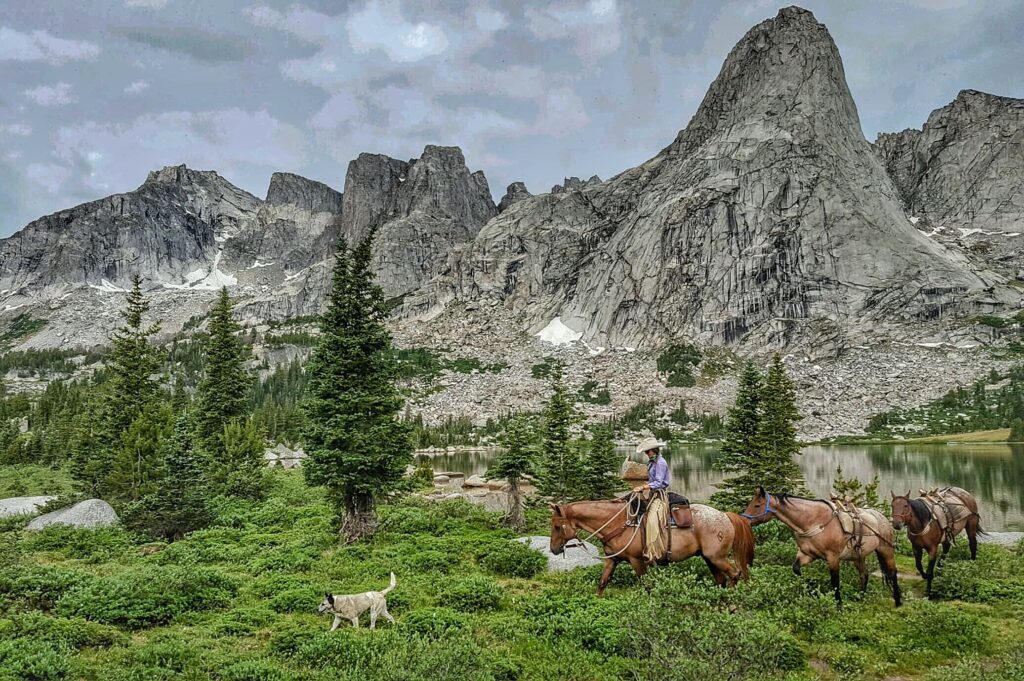
2. With nearly fifty years in the ranch’s history books, what can you say is the main value in running an organization with longevity and experience to back up its mission?
The Diamond 4 Ranch’s mission is to help our guests unplug from the stress of the modern lifestyle and reconnect with the natural world, their loved ones, and their true selves through horseback riding, hiking, fishing, hunting, and wellness-focused activities. I believe that humanity is deeply wired to seek connection with the natural world in some shape or form. Our place provides such unique access to tap into deep, meaningful connections that speak to people’s souls and keep them coming back. About 50% of our clientele return yearly, and most of our advertising throughout the years has been word-of-mouth. As the highest-elevation guest ranch in Wyoming, we are off-grid and celebrate simplicity’s beauty. When folks visit, we bring them into our community, share the value of living simply, and cherish the authentic connections formed through conversations and meaningful experiences. With all that said, I think our “key ingredient” for longevity in the business is that our number one value is deeply rooted in showing genuine care for our guests. We are thrilled to share such meaningful adventures with people, and we don’t take that lightly; we ask our employees to be genuinely invested in the well-being and joy of our guests and always to keep that as the #1 priority. Connected to this goal of caring for the well-being of our guests, we strongly focus on maintaining a high quality of horsemanship, as the horses are the core of our operation.
3. The retreats you offer at Diamond 4 Ranch involve a unique blend of activities – everything from yoga to fly fishing. What has been a particularly memorable experience in which someone may have tried something outside their comfort zone on a retreat?
I feel lucky to witness folks building strength outside their comfort zone consistently. One gal that comes to mind is now 78 years old, and she has come on five wellness retreats with me. On her first trip, she told me that riding horses in the mountains helped her face a huge fear after a horse accident she had many years prior. On our weeklong wilderness pack trip, she rode many miles in gorgeous and rugged terrain. She fell deeply in love with her horse “Lil Red,” and she experienced a renewal in confidence with horses. She wrote me a very kind letter that New Year’s Eve saying that after our trip together, she moved throughout the rest of the year feeling a new sense of strength and confidence. She said, “At 74, I didn’t think I would have any more “life-changing” experiences, but I can truthfully say that going on that trip with you has changed my life most positively.”
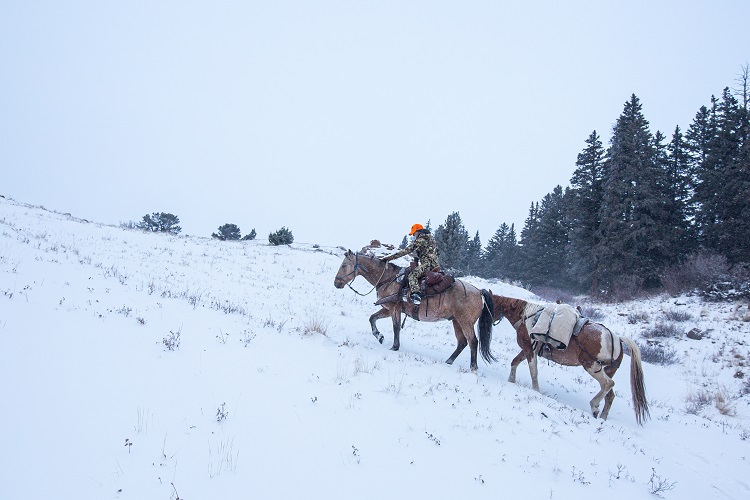
4. You see and work with many different animals on a daily basis. What does it mean to include animals in the closest circle of your community?
Our horses mean everything to me. They are incredible creatures who have raised me and built my sense-of-self and strength in the mountains throughout my upbringing. We could not do this work if it weren’t for these unique animals, so with everything I do, I express to them a deep sense of respect and appreciation – a calm, confident, kind leadership that helps keep them at ease, “at home.” Horses are prey animals whose instincts are to look out into the world, thinking, “What could eat me today?” The fact that they can work through those instincts to find trust and comfort in humans enough to do what we ask of them is incredible. They are the best partners and coworkers in the world. Horses genuinely offer a mirror to see ourselves better – how we communicate without words, serve as trustworthy partners, convey respect and earn it, and lead. They are my best mirrors and teachers.
5. What attracted you to the yoga practice, and how do you incorporate its philosophy into your leadership on the ranch?
My yoga practice started in my 20s. After a lifetime of being a dancer, I sought a new movement modality. What I found was so much more; a journey into self-awareness with methods to quiet my busy mind. The connection of fluid physical movement with breathwork helps to calm my parasympathetic nervous system and mind.
Naturally, I’m a fairly high-energy gal. I thrive in strenuous physical movement and am a seeker of Type 2 fun that pushes me to my limits. However, I’ve seen how my high-energy mind can tend toward stress and anxiety when not balanced. My yoga practice has helped me find a sense of calm as I lead our ranch, which is a fast-paced operation. The nature of our work requires intense physical, mental, and emotional stamina – working long days at high elevations and serving as an interactive leader for folks all day long – and we tend to move at a very fast pace to accomplish a heavy workload. I aim to lead with calm energy – still showing an example of a “hustle and work hard” productivity, but in a low-stress and joyful way.
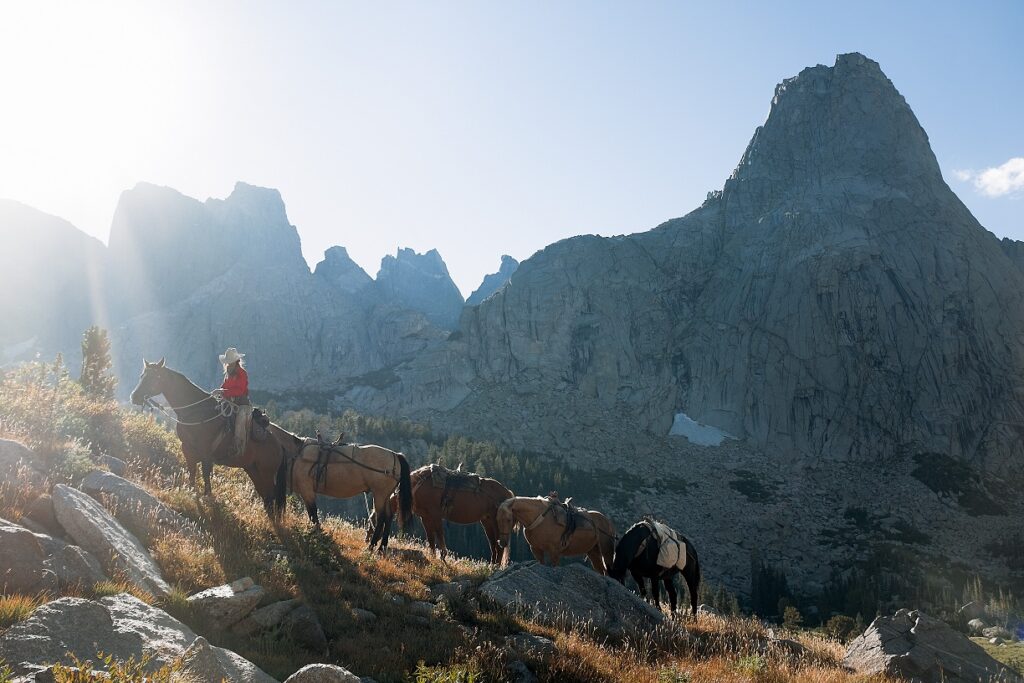
6. Yoga and hunting may seem like a contradictory pairing of activities. Can you elaborate on how you incorporate respect for animals into the ethos and teachings of Diamond 4 Ranch?
Growing up, I had no interest in hunting. As an avid animal-lover who always found companionship in her animals – dogs, cats, horses, goats, sheep, geese, ducks, rabbits, long-horn cattle (who I trained to ride bareback), salamanders, snakes, hamsters, you name it! I was the child who always collected – and took the responsibility of caring for animals seriously. The idea of hunting just felt like “killing.” That had zero appeal to me. However, I did grow up eating wild game meat that was harvested by my dad or the hunters he would guide – elk, deer, antelope, moose – always knowing exactly the ecosystem/area from which the animal came. This is the primary source of meat we use at the ranch, and when I was in my early-20s, we ran out of meat one summer and started using all meat from the grocery store. Because I strive to be cognizant of where my food comes from, it felt out of alignment for our only red meat source, which was plastic-wrapped beef from the store with no idea of how/where/when the animal was harvested. This encouraged me to reconsider my perspective on hunting. After much thought, I decided to harvest a deer from our ranch – knowing exactly the type of vegetation that animal had eaten, growing up in our hayfields and apple orchard along with a few hundred other deer. Then, to continue filling the freezers, I harvested an elk at 11,000ft elevation on October 31 – in snow and sleet, 10 miles into the backcountry with my dad. It was a strenuous, emotional, enlightening experience that deepened my connection with the land and my father.
Now I only harvest an animal if we need the meat, appreciating that it’s a lean red meat rich in protein and amino acids, and it comes from the ecosystem to which I’m connected. I guide hunters, which began as an intimidating endeavor in my twenties, as many of the folks I guide were men twice or thrice my age. After now guiding hunters for nine years, I find deep fulfillment in sharing a mindful ethos around hunting with the folks I guide. I emphasize the experience not on “killing” but on getting to deeply know the ecosystem in which we hunt – learning how the animals move through the terrain and why, learning to look deeper into the land through the lens of the animals which call it home, tuning deeply into the senses while quietly embedding ourselves into the landscape to witness the natural world as it is without human interruption. The act of hunting is a deeply intimate experience with the land, and it has made me a much stronger mountain woman – more astute and aware of my surroundings, mindful of the impact humans impose on the land when not being quietly embedded with the surroundings, and more compassionate to how and why animals move through the mountains like they do.
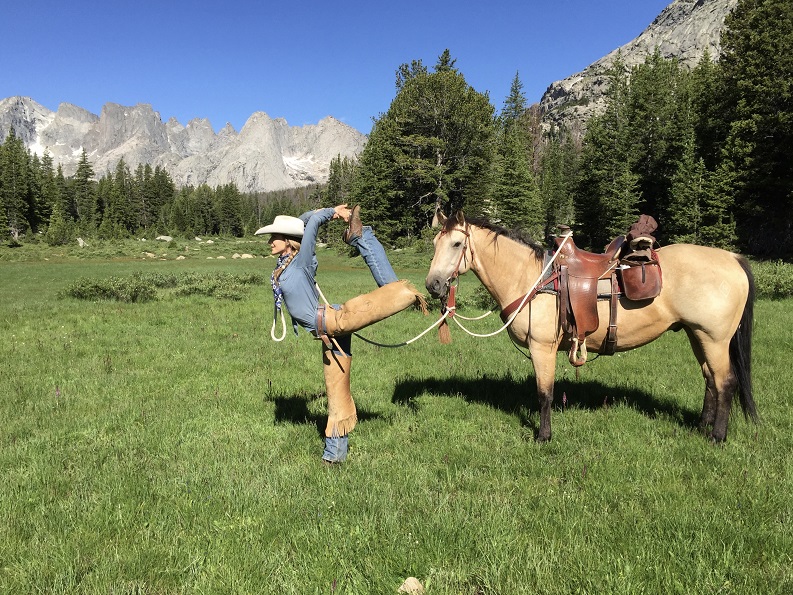
7. How have your travels across the globe influenced your approach to the ranch?
Open-mindedness is something I value most in myself and others. In order to broaden my perspective and deepen my sense of empathy and understanding of the world around me, I find great value in traveling. Knowing that my family has been deeply rooted in Wyoming for six generations, I find it important to expand my world view as I’m striving to find a balance of cherishing the traditions that make up the core of our operation while also improving our practices to further enhance the experience for our guests, our employees and our horses.
8. How did you become involved with pageantry?
Pageants were not on my radar growing up. However, I have always enjoyed seeking out leadership roles in my community. In high school, I was an ambitious, energetic gal signing up for all the clubs I could. Achievement-driven, I found value in being involved in my community, and (admittedly) I think I found a sense of validation in obtaining titles like “Student Council Vice President,” “FFA President,” “Dance Team Captain,” etc. In my freshman year of college, I was elected as the Wyoming State FFA Secretary, which involved a year of traveling the state as a representative for the Wyoming FFA Association, speaking in many schools and events, etc. During this year of leadership, I found great joy in public speaking; it was almost as if it was easier to be vulnerable on stage with a large audience than in a one-on-one interaction. Public speaking became a conquered fear and a new passion.
A few other contributing factors that led me to find the Miss Wyoming stage were being on the University of Wyoming Dance Team, honing my love for a creative, energetic performance, as well as a stint working in the U.S. House of Representatives for our Wyoming Congresswoman. At the time, my far-off goal of becoming the Governor of Wyoming started dancing around my mind. A bit out-of-reach at the time, I figured the title of Miss Wyoming felt more obtainable. So, I gave it a shot – and won. Who knew! This little ol’ ranch kid who spent half her life living without electricity was headed for the Miss America stage as Miss Wyoming 2014. My platform throughout the year was “Explore Nature’s Playground,” encouraging youth to find healthy, active, unplugged adventures outdoors.
9. What is something you’d like to share about the intersection of your experience with pageantry and your experience as a leader on the ranch – something that perhaps does not get asked enough?
Nudging on the edges of my comfort zone has continued to introduce me to stronger versions of myself in every aspect of my life. Feeling in a completely vulnerable position as Miss Wyoming, I knew that putting myself in a “spotlight” could mean being a subject of criticism and judgment. Still, I hoped that, in some small way, I could be a sense of inspiration to at least one person. I hoped that by taking a leap outside my comfort zone in such a vulnerable way, I would be bound to build my strength and character along the way. Stepping into that position as Miss Wyoming meant offering myself up to be judged by others, on and off the stage. Honing that sense of vulnerability and courage has given me the strength and self-awareness to step into more arenas throughout my life, like taking over the Diamond 4 Ranch, even when fear tries to talk me out of it.
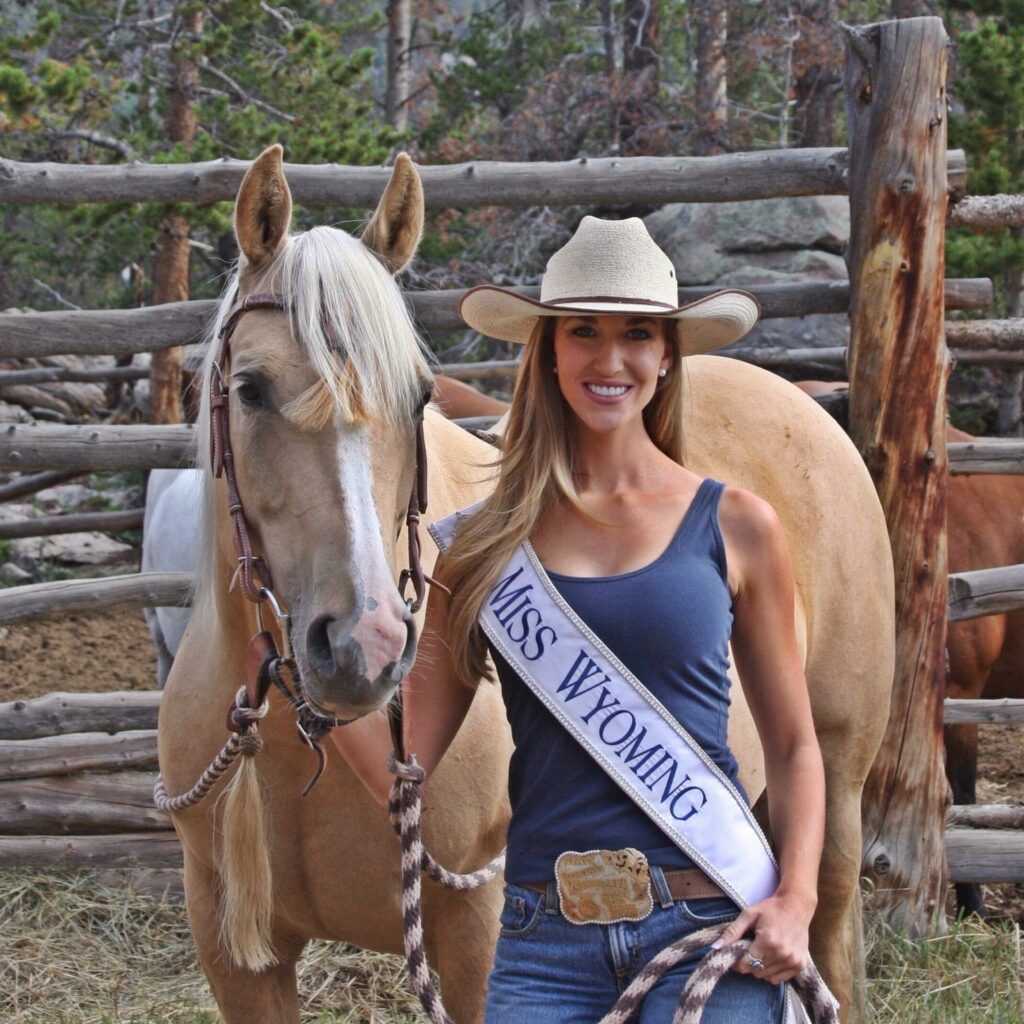
10. How has being a NOLS instructor helped to evolve your relationship with the outdoors?
Although I grew up on a guest ranch with many other people, much of my time in the Wind Rivers has been spent by myself rather than with a group. I have always enjoyed mixing up my schedule to spend many days alone on the trail with just a string of pack horses and my dog. This helps break up the constant interaction with folks, as I’m somewhat introverted and feel most refueled with time alone. I think of myself as an “independent enthusiast,” energetically thriving with alone time in the wilderness, especially when I’m with my animals.
Becoming a NOLS instructor was an adjustment to not having my animals nor the alone time I was used to in the backcountry. But it has been immensely nourishing to work as an educator, mentoring students to explore their edges and build a strong community. There is a notable difference to me between the experience of guiding vs. being an outdoor educator with NOLS. Helping my students build competence and confidence in their outdoor skills requires me to think more deeply about creative ways to reach each student. Doing this encourages me to look deeper into the teachings of the wilderness, aiming to see it not only through my lens but trying my best to look into the wilderness with as many different views as possible. This has continued to deepen my connection and appreciation for various environments and helped me appreciate what wilderness means to each of us.
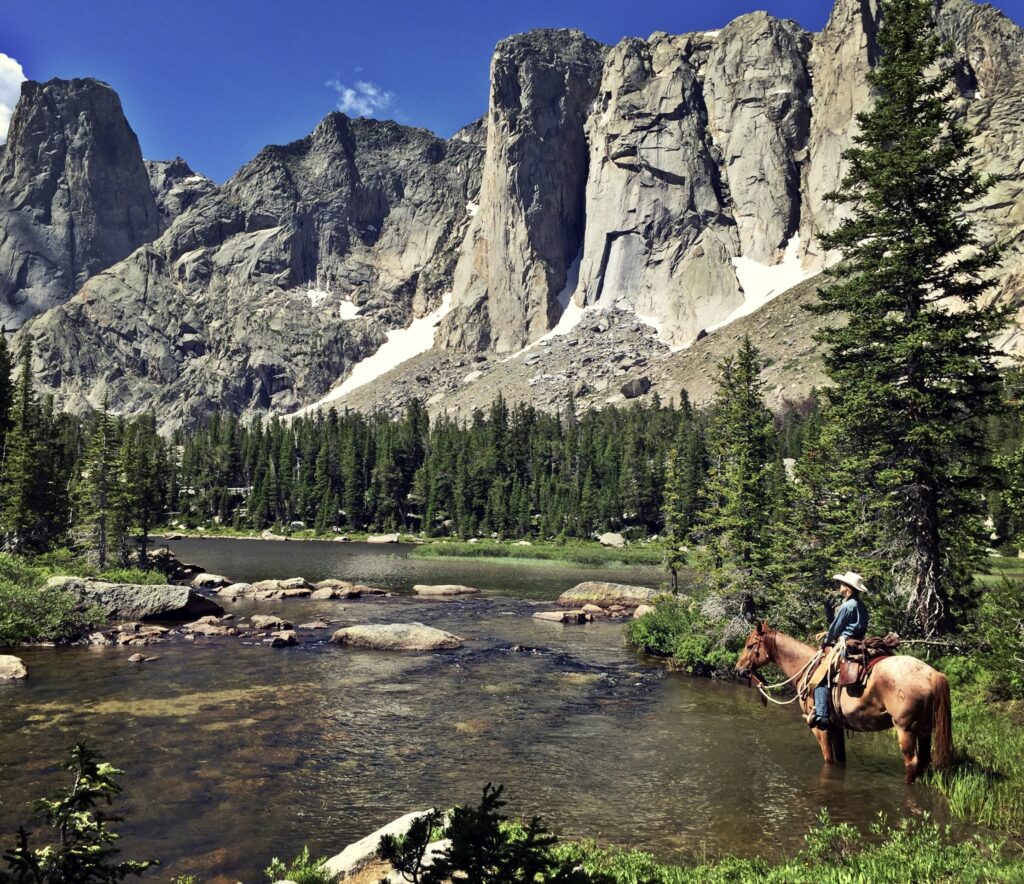
11. In your experience, what has been the most challenging factor to overcome for people who are not used to extended and immersive outdoor experiences?
At the beginning of an educational course or a guided trip, many folks who are new to the experience may have anxiety around the “toilet situation.” Knowing this can be a nerve-wracking “taboo” topic to discuss, we, as NOLS instructors, like to comfortably and playfully welcome it into the conversation as we teach proper methods. There can also be anxiety around packing minimal clothing options and personal items. I was once a just-in-case packer on my first NOLS course, wanting to be extra prepared for anything! But I quickly realized that going 30 days with the same t-shirt and pants/shorts each day, three pairs of underwear, and a conservative but sufficient layering system is not only doable but liberating! There is profound beauty, ease, and liberation found within simple living. Students often remark on how “cluttered” their lives at home feel, realizing the refreshing nature of simplicity and unplugging.
12. The state of Wyoming is, of course, very close to your heart. How do you suggest that people who do not live with such natural surroundings can nevertheless cultivate a close relationship with the environment?
I’m aware that when I encourage the message of living an active outdoor lifestyle, that message comes from a place of privilege, having been born into a family business that has afforded me close access to wild places. I also realize there can seem to be many barriers to entry: the cost of signing up for a guided trip or educational course, the cost of traveling to remote wilderness areas and taking time off work to do that, the cost of high-quality outdoor gear, the traditional stigma of “wealthy white straight folks, especially men” occupying much of the outdoor industry landscape…these can all be reasons for discouragement. However, accessing nature does not have to seem intimidating or exclusive!
Even while living in more densely populated areas, I encourage folks to learn more about the green spaces within their area, like parks or community gardens; to consider allocating more time toward walking/biking to destinations; to pay close attention to their food sources, and if able, seek out locally sourced foods and/or consider growing a few freshies of their own in an indoor hanging garden or in their yard; look into local clubs or events (running/walking/biking/swimming clubs, yoga or fitness classes in the park, farmer’s markets, etc.); consider applying for a job with an outdoor company – start out working on a dude ranch cleaning cabins, working at a river rafting company in the gift shop, washing dishes for a restaurant in a town that offers closer access to remote environment….there are lots of outfitting/guiding/outdoor ed companies that hire folks every season! Seek out the Outdoor Ed clubs in college; gather a group of friends to carpool to a state park; take an online yoga class in the backyard…there are many ways to connect with nature!
13. Inspiring females to be active and empowered in outdoor activities appears to be one of your primary messages. Why is this so important to you?
Growing up, we had many strong women work on the ranch. As a kid, I looked up to these badass cowgirls who came from all over the country to put their work ethic and skills to use in the mountains of Wyoming. Although we had many women work at the ranch, it was rare to see all-women groups come as guests. As I got older, I felt more and more compelled to fill that void by leading women’s wellness trips and the Wilderness Cowgirl Camp for girls ages 10-14.
To me, the image of a beaming confident woman riding and leading a string of horses in the mountains radiates female empowerment; she shows the art of caring for her animals, herself, and others in a remote wilderness context. She learns to view the inherent challenges of the wilderness as opportunities for growth and problem-solving. She learns to find a sense of ease, comfortability, and connection in the backcountry. She becomes resilient and grounded. She balances grit and grace. I hope that by using this platform to teach and connect with other women, they will leave the mountains with a renewed sense of strength, resilience, and grounding to carry into their everyday lives.
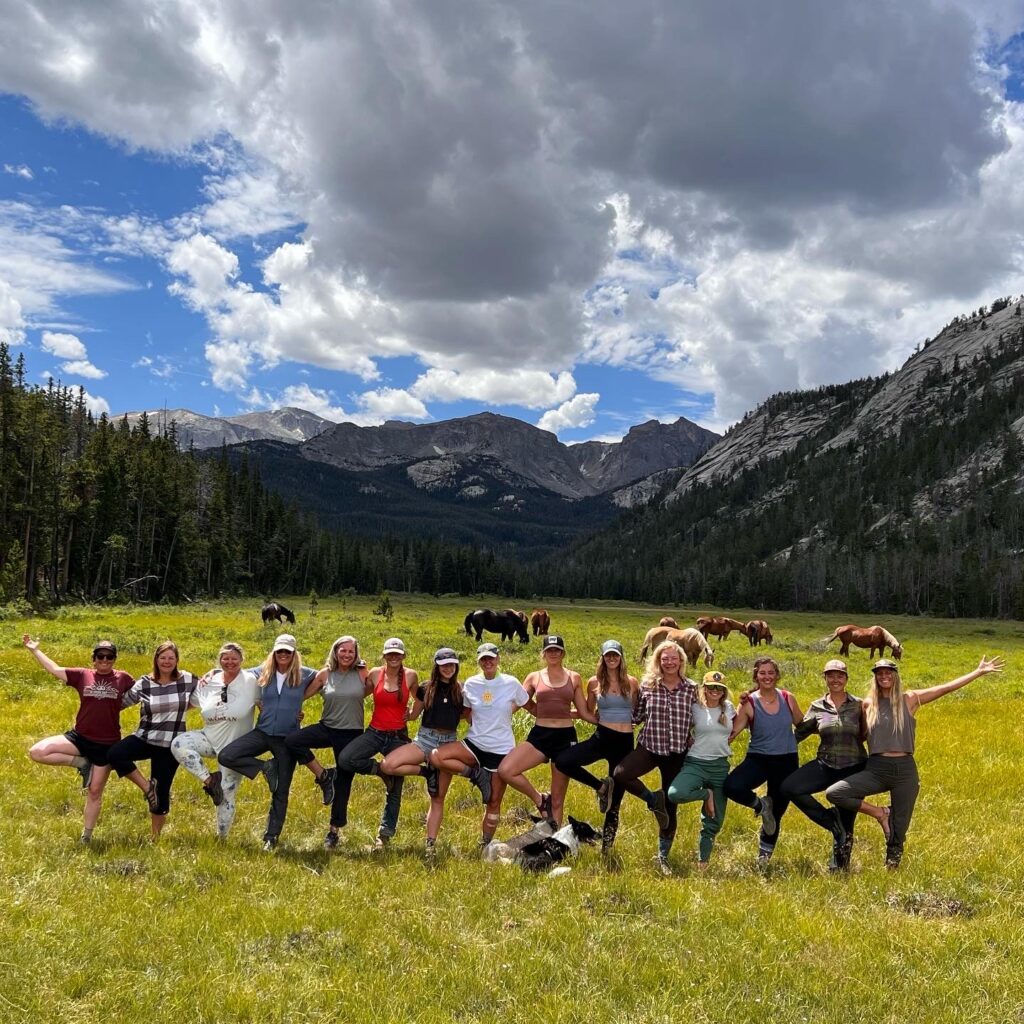
14. What do you see as the largest barrier standing between women and outdoor activity?
Each outdoor activity seems to have its own culture and, within that, its own perceived barriers to entry for women. From my experience in the worlds of hunting, ranching, climbing, whitewater sports, backpacking, canyoneering, fly fishing, and skiing, I’ve seen common threads as well as some distinct differences in each activity type. The common threads I’ve personally witnessed have involved being in male-dominated groups, sensing subtle (or not-so-subtle) belittling behaviors or remarks toward women, which fuels in me a feeling of needing to prove my competence, strength, resilience, and my right to be there. Being the only woman in a male-dominated activity can be intimidating and frustrating when not treated like an equal; it takes a lot of courage and vulnerability for women to enter those spaces. The involvement of women in the outdoor industry is definitely growing, and I hope that my role as a guide and outdoor educator will continue to inspire other women to deepen their involvement and step into leadership in the outdoors.
15. Who are your inspirations?
I aim to soak up bits of inspiration from everyone I meet, approaching each interaction with an open mind and heart, eager to learn and expand my perspective. Every person we encounter can teach us something, and I believe some of the most profound connections can happen in a short time if we are open to it. Growing up, I kept a journal at the ranch each summer where I would list everyone I met and something about them that I found inspiring. It taught me to intentionally seek out the good in others, anticipating that I would always have something to learn. Some characteristics I find most inspiring are contagious curiosity, deeply-rooted optimism, resilience through adversity, dedicated work ethic, humility, compassion, wisdom, and open-mindedness. Whether it’s conveyed through words, actions, or on the energetic level, I aim to soak up as much positive influence from the world around me as possible. To me, this is what it means to live a full, connected, nourishing life.
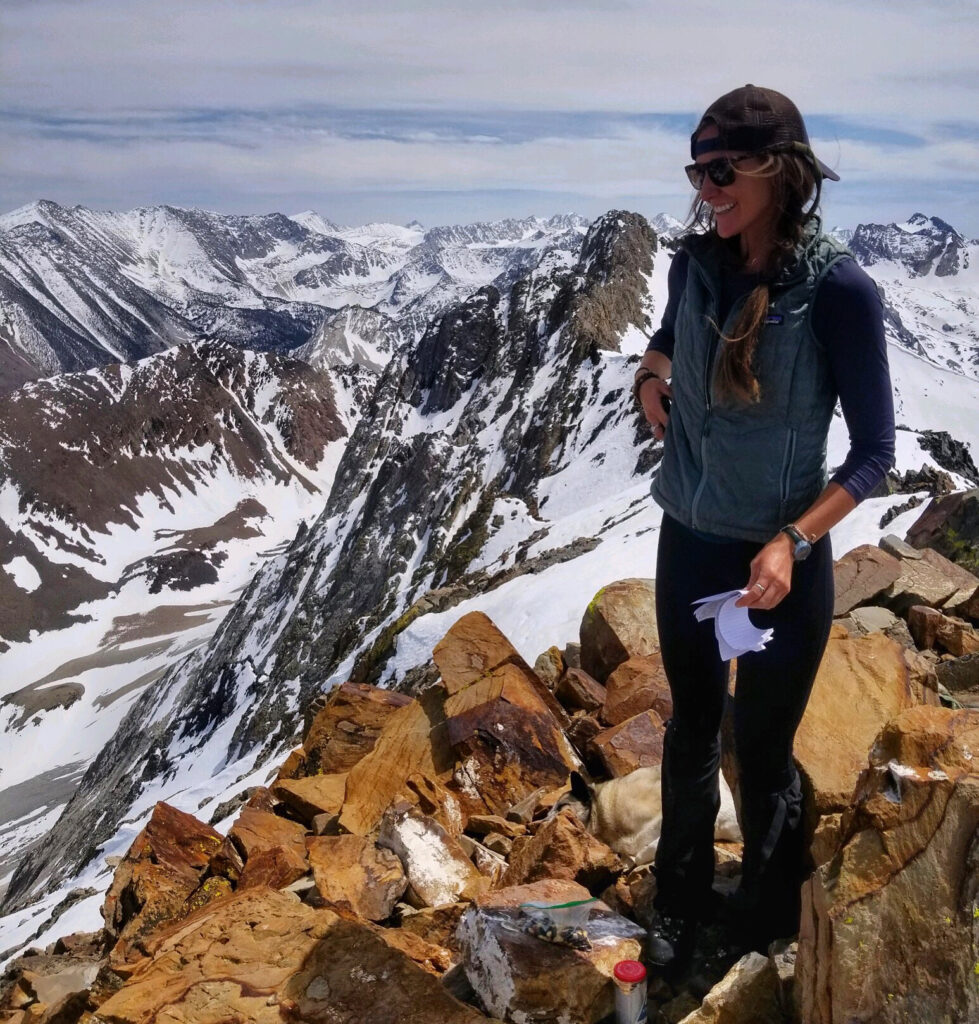
16. The tension between an active lifestyle and time spent on computers and phones can be very difficult for people to manage. How do you balance necessary marketing tasks like social media with your time “off the grid”?
For about six months each year, my phone is on “Airplane Mode.” It is liberating. I hate being tied to my phone, but it does mean that I often go a few weeks without replying to texts, calls, emails, or messages. Sometimes, this can be challenging to balance in a world that expects immediacy. In the off-season, while I’m booking clients, advertising trips, and corresponding with employees, I spend a huge portion of each day on my phone and computer. It is a slippery slope to get sucked into technology, but I know my mind feels healthier and happier when it is unplugged. To find a healthy balance in the off-season, I try to mix a lot of outdoor movement into my days. I usually go for a walk in the morning, then spend about three hours answering emails, go for a walk/run/ski for a few hours midday, then get back to emails/calls for 2-3 hours in the afternoon.
17. What do you perceive as the most important factor to remember in running a family business as opposed to an independent venture?
It is natural to run into points of tension when working in a family business because the boundaries may be more blurred than with non-related coworkers or business partners. However, while the closeness with each other can allow frustrations to arise, there is also a deep connection that can be the heart of the operation. Family ties can be the glue that holds a business together, or in reverse, the business can be a wedge that drives a family apart. I believe it is key to prioritize relationships over the business. I’m grateful that even through any frustrations and friction points, my family has a profound level of trust and respect at the heart of our business. While I’m excited to make changes as we transition ownership, I always want to honor the ranch’s history and all my parents have poured into the business. It is important to me to honor the family legacy.
18. What’s next for the ranch, and for you?
I hope to continue shifting the ranch into more of a wellness and education center while still offering the traditional trips that we always have. My goal is to provide a wide range of specialty adventures by adding trips like creative writing and photography workshops, youth camps, and more to our already extensive list of wellness retreats. As I take ownership of the business, I am excited to continue building a solid leadership team to help me as my parents step back. I want to focus on a large part of my energy on making the “wellness and education” portion of the business while having a ranch manager be the point person for organizing our traditional offerings and day-to-day happenings. My goal is to carry on the family legacy in a way that fuels my passions and helps me lead a balanced, healthy life.
 Food
Food Farmers
Farmers Sustainable Living
Sustainable Living Living Planet
Living Planet News
News